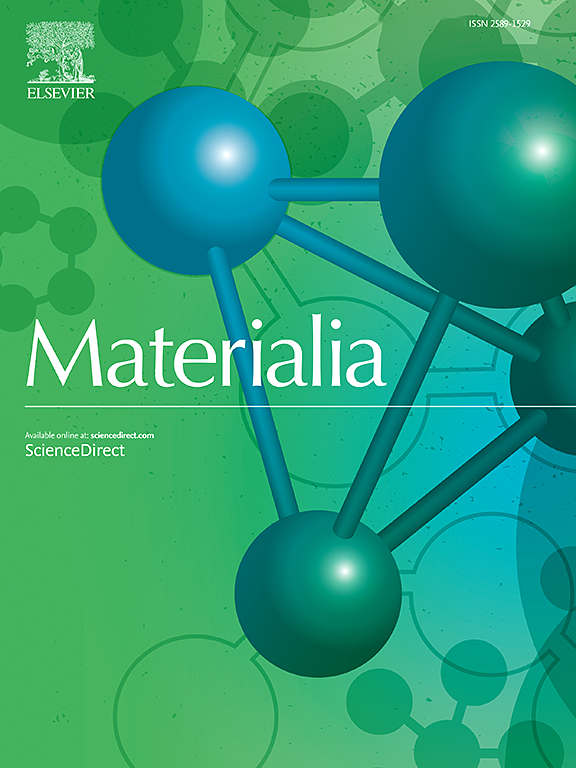Curvature of free-standing polycrystalline SiC thick films grown by CVD: On the origin of the residual stress gradient
IF 3
Q2 MATERIALS SCIENCE, MULTIDISCIPLINARY
引用次数: 0
Abstract
Polycrystalline SiC can serve as a receiver substrate for the fabrication of engineered SiC wafers for power-electronics devices. These substrates must be as flat as possible for further processing. They can be fabricated by chemical vapor deposition (CVD) on a sacrificial substrate, which is then removed leaving a thick free-standing SiC film. When deposited by CVD, a residual intrinsic stress gradient develops through thickness of the film and results in the curvature of the free-standing film. In this study, we show that two mechanisms are responsible for the occurrence of such an intrinsic stress gradient. The first is due to a change of grain size through the film's thickness that in turn leads to a change of intrinsic stress during growth. The second mechanism is attributed to the continuous relaxation of the film during growth. Although a constant grain size through thickness can be achieved with appropriate process conditions to minimize the intrinsic stress gradient, the second mechanism occurs for any microstructure. Therefore, the intrinsic stress gradient and the resulting curvature of the free-standing films is difficult to avoid though it can be minimized through pertinent choices of growth conditions.

CVD生长独立多晶SiC厚膜的曲率:残余应力梯度的来源
多晶SiC可以作为接收衬底,用于制造用于电力电子器件的工程SiC晶圆。为了进一步加工,这些基材必须尽可能平整。它们可以通过化学气相沉积(CVD)在牺牲衬底上制造,然后去除衬底,留下厚厚的独立的SiC薄膜。当用CVD沉积时,残余的本征应力梯度通过薄膜的厚度发展,并导致独立薄膜的曲率。在这项研究中,我们表明了两种机制是负责发生这种固有应力梯度。第一种是由于薄膜厚度改变了晶粒尺寸,这反过来又导致了生长过程中固有应力的变化。第二种机制归因于生长过程中薄膜的持续松弛。虽然在适当的工艺条件下可以使本应应力梯度最小化,从而使晶粒尺寸随厚度的变化保持不变,但对于任何微观结构都存在第二种机制。因此,独立薄膜的固有应力梯度和曲率是难以避免的,尽管可以通过适当的生长条件选择将其最小化。
本文章由计算机程序翻译,如有差异,请以英文原文为准。
求助全文
约1分钟内获得全文
求助全文
来源期刊

Materialia
MATERIALS SCIENCE, MULTIDISCIPLINARY-
CiteScore
6.40
自引率
2.90%
发文量
345
审稿时长
36 days
期刊介绍:
Materialia is a multidisciplinary journal of materials science and engineering that publishes original peer-reviewed research articles. Articles in Materialia advance the understanding of the relationship between processing, structure, property, and function of materials.
Materialia publishes full-length research articles, review articles, and letters (short communications). In addition to receiving direct submissions, Materialia also accepts transfers from Acta Materialia, Inc. partner journals. Materialia offers authors the choice to publish on an open access model (with author fee), or on a subscription model (with no author fee).
 求助内容:
求助内容: 应助结果提醒方式:
应助结果提醒方式:


